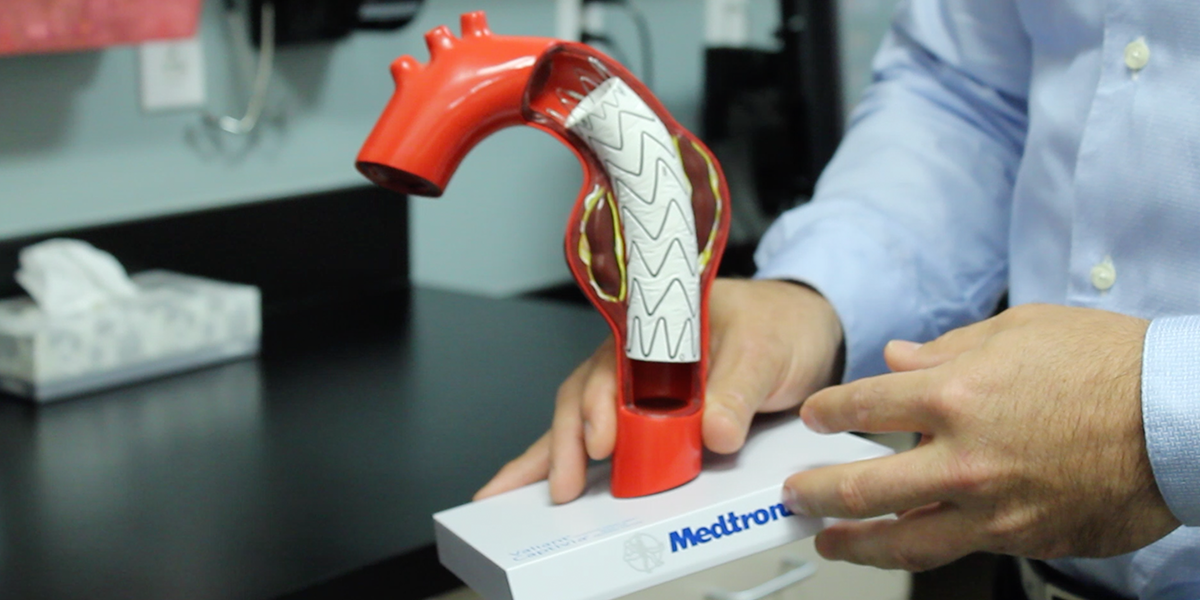 Abdominal aortic aneurysm (AAA) repair has grabbed headlines, particularly due to public figures like Senator Bob Dole and Rodney Dangerfield having undergone this procedure. Additionally, notable personalities such as Joe DiMaggio, Roy Rogers, Conway Twitty, and others were affected by AAA. With it now ranking as the 10th leading cause of death and showing a significant rise in new cases among hypertensive, elderly patients, there’s growing interest in nationwide screening, as most patients remain asymptomatic until rupture, which often results in death.
Abdominal aortic aneurysm (AAA) repair has grabbed headlines, particularly due to public figures like Senator Bob Dole and Rodney Dangerfield having undergone this procedure. Additionally, notable personalities such as Joe DiMaggio, Roy Rogers, Conway Twitty, and others were affected by AAA. With it now ranking as the 10th leading cause of death and showing a significant rise in new cases among hypertensive, elderly patients, there’s growing interest in nationwide screening, as most patients remain asymptomatic until rupture, which often results in death.
The Significance of Screening
Focused screening, despite current Medicare reimbursement limitations, is gaining attention. Recent studies from the UK advocate its cost-effectiveness for “at-risk” populations. Until widespread screening becomes a reality, most aneurysms will likely be incidentally found during routine exams or other radiographic studies.
Advances in Treatment Methods
Advancements in anesthesiology, critical care medicine, and surgical techniques have enhanced the safety and accessibility of aneurysm repair. However, traditional surgical repair methods involve lengthy hospital stays, lasting around 6 to 7 days, with a recovery period spanning weeks to months. Medical therapies, laparoscopic repair, and risk reduction strategies have not significantly affected aneurysm treatment, leaving gene therapy with protease inhibitors as an intriguing yet elusive concept.
Tangible Improvements in Repair Techniques
 Notable improvements center around catheter-based procedures and minimally invasive techniques, such as Endovascular Aneurysm Repair (EVAR). EVAR’s genesis dates back to the early ’90s, pioneered as an alternative to open aneurysm repair. The FDA’s 1998 approval of endoluminal devices marked a turning point, showcasing shorter hospitalization and recovery times compared to open procedures.
Notable improvements center around catheter-based procedures and minimally invasive techniques, such as Endovascular Aneurysm Repair (EVAR). EVAR’s genesis dates back to the early ’90s, pioneered as an alternative to open aneurysm repair. The FDA’s 1998 approval of endoluminal devices marked a turning point, showcasing shorter hospitalization and recovery times compared to open procedures.
The Procedure and its Complexity
Preparation for endovascular stent graft repair involves various imaging techniques and computer modeling for accurate sizing and graft selection. While several devices, both commercial and experimental, offer unique strengths, patient selection is based on anatomical and physical factors. The procedure, performed at specialized centers, demands substantial resources, yet offers significant benefits—patients typically avoid ICU stays and swiftly return to normal activity levels.
Long-term Outlook and Future Possibilities
Long-term results of EVAR appear comparable to open aneurysm repair, with high patient satisfaction driving advancements in EVAR technology. With the promise of reducing overall AAA mortality and potential applications in more complex vessel diseases, the future of EVAR holds immense promise and deserves attention for its revolutionary potential.
By Charles S. Thompson, M.D.
Frequently Asked Questions
AAA screening is crucial because most individuals with AAA are asymptomatic until it ruptures, often leading to fatal consequences. Screening is recommended for individuals aged 65-75 who have ever smoked or have a family history of AAA.
Traditional surgical repair involves longer hospital stays (6-7 days) and recovery periods spanning weeks to months, while minimally invasive techniques like EVAR typically result in shorter hospitalization (a few days) and quicker recovery (within a few weeks).
Eligibility for EVAR is determined based on anatomical and physical factors, and not all patients may qualify for the procedure. Risks associated with EVAR include possible complications such as endoleaks, graft migration, or infection.
Post-procedural care after EVAR is essential and involves diligent surveillance, including periodic imaging and regular follow-up with physicians to monitor the graft and ensure its effectiveness.
